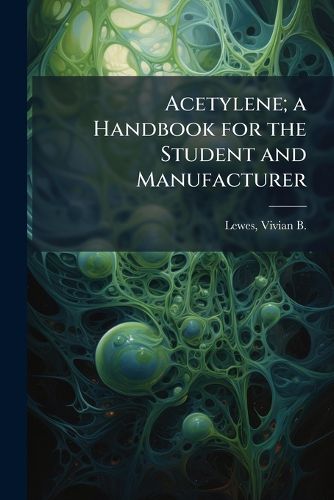Readings Newsletter
Become a Readings Member to make your shopping experience even easier.
Sign in or sign up for free!
You’re not far away from qualifying for FREE standard shipping within Australia
You’ve qualified for FREE standard shipping within Australia
The cart is loading…






"Acetylene; a Handbook for the Student and Manufacturer" by Vivian B. Lewes, originally published in 1900, provides a comprehensive overview of acetylene, a crucial industrial gas. This handbook serves as an invaluable resource for students and manufacturers alike, detailing the properties, production methods, and applications of acetylene during the turn of the century.
Lewes delves into the chemical characteristics of acetylene, explaining its formation, storage, and safe handling. The book offers detailed insights into the manufacturing processes prevalent at the time, making it an essential guide for those involved in chemical engineering and industrial applications. This historical text provides a unique perspective on the technological advancements and chemical practices of the early 20th century, capturing a pivotal era in industrial chemistry.
This work has been selected by scholars as being culturally important, and is part of the knowledge base of civilization as we know it. This work was reproduced from the original artifact, and remains as true to the original work as possible. Therefore, you will see the original copyright references, library stamps (as most of these works have been housed in our most important libraries around the world), and other notations in the work.
This work is in the public domain in the United States of America, and possibly other nations. Within the United States, you may freely copy and distribute this work, as no entity (individual or corporate) has a copyright on the body of the work.
As a reproduction of a historical artifact, this work may contain missing or blurred pages, poor pictures, errant marks, etc. Scholars believe, and we concur, that this work is important enough to be preserved, reproduced, and made generally available to the public. We appreciate your support of the preservation process, and thank you for being an important part of keeping this knowledge alive and relevant.
$9.00 standard shipping within Australia
FREE standard shipping within Australia for orders over $100.00
Express & International shipping calculated at checkout
Stock availability can be subject to change without notice. We recommend calling the shop or contacting our online team to check availability of low stock items. Please see our Shopping Online page for more details.
"Acetylene; a Handbook for the Student and Manufacturer" by Vivian B. Lewes, originally published in 1900, provides a comprehensive overview of acetylene, a crucial industrial gas. This handbook serves as an invaluable resource for students and manufacturers alike, detailing the properties, production methods, and applications of acetylene during the turn of the century.
Lewes delves into the chemical characteristics of acetylene, explaining its formation, storage, and safe handling. The book offers detailed insights into the manufacturing processes prevalent at the time, making it an essential guide for those involved in chemical engineering and industrial applications. This historical text provides a unique perspective on the technological advancements and chemical practices of the early 20th century, capturing a pivotal era in industrial chemistry.
This work has been selected by scholars as being culturally important, and is part of the knowledge base of civilization as we know it. This work was reproduced from the original artifact, and remains as true to the original work as possible. Therefore, you will see the original copyright references, library stamps (as most of these works have been housed in our most important libraries around the world), and other notations in the work.
This work is in the public domain in the United States of America, and possibly other nations. Within the United States, you may freely copy and distribute this work, as no entity (individual or corporate) has a copyright on the body of the work.
As a reproduction of a historical artifact, this work may contain missing or blurred pages, poor pictures, errant marks, etc. Scholars believe, and we concur, that this work is important enough to be preserved, reproduced, and made generally available to the public. We appreciate your support of the preservation process, and thank you for being an important part of keeping this knowledge alive and relevant.